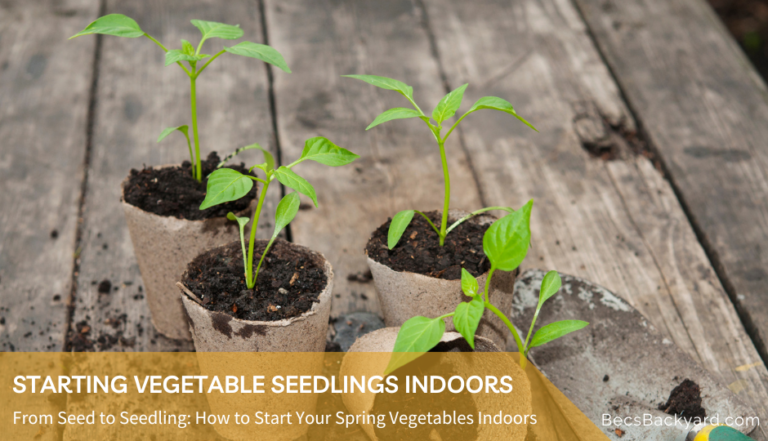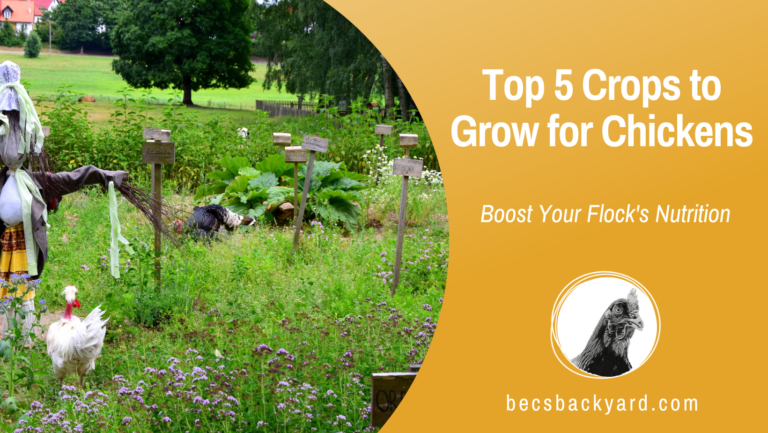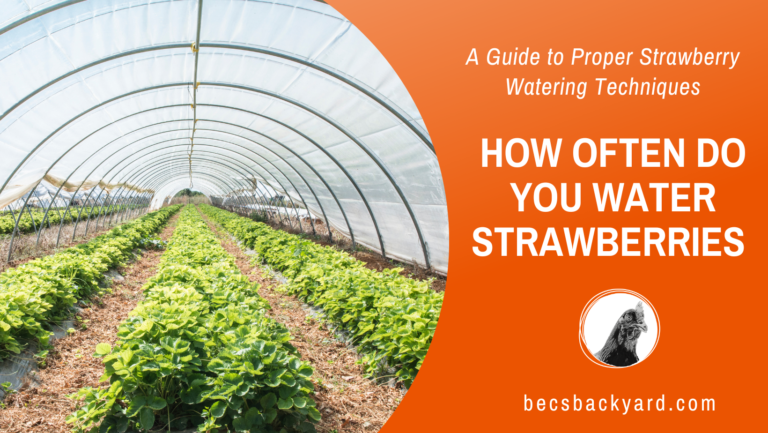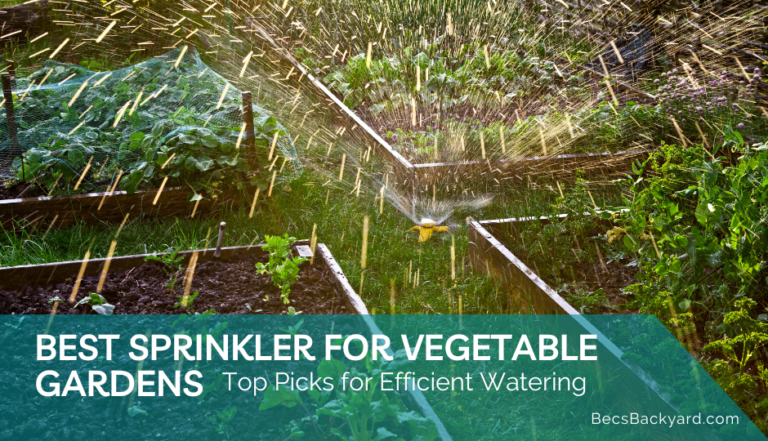How to Garden in Small Spaces: Tips and Tricks for Maximizing Your Backyard
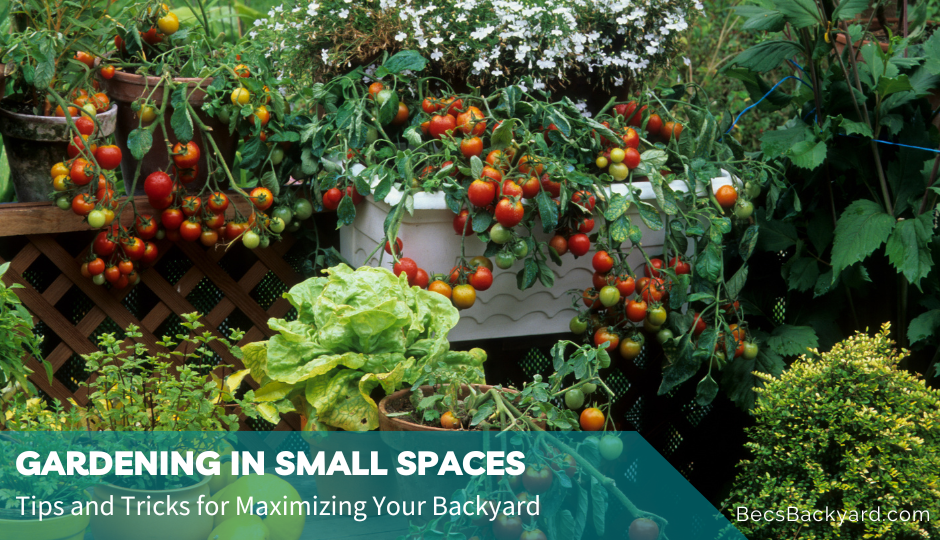
Are you interested in starting a garden, but don’t have a lot of space? Don’t worry, you can still grow a beautiful and productive garden in a small space! In this post, we’ll share some tips and tricks for how to garden in small spaces, from selecting the right plants to making the most of your vertical space.
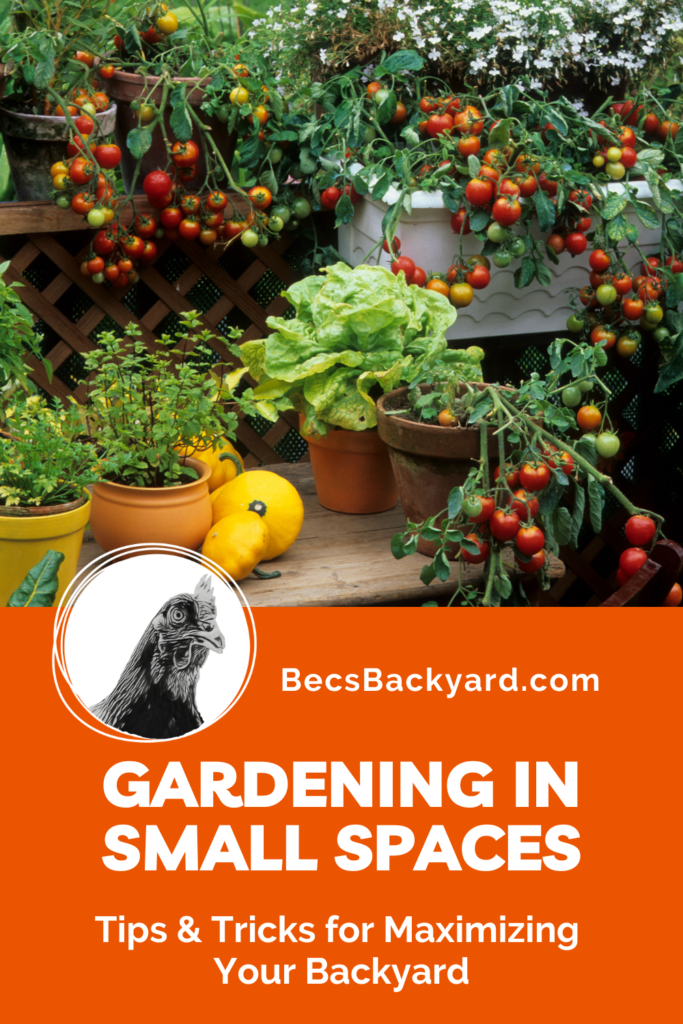
Selecting the Right Plants
When gardening in small spaces, it’s important to choose plants that are well-suited to container gardening and don’t require a lot of room to grow. Here are some great options with their specific ideal growing requirements:
Herbs (basil, thyme, and rosemary):

Growing herbs in containers is a practical and convenient way to add fresh herbs to your cooking and take advantage of the many benefits of gardening, even if you have limited outdoor space. Herbs don’t require a lot of space to grow, and many varieties can thrive in small pots or containers. This makes them perfect for small space gardening, where maximizing space is important.
Typical growing requirements of herbs
- Sunlight: 6-8 hours per day
- Soil: well-draining, fertile soil with pH of 6-7
- Water: regular watering, allowing soil to dry out slightly between waterings
- Temperature: prefer warm temperatures above 60°F (15°C)
- Additional care: regular pruning to promote bushiness and prevent bolting
Lettuces and other greens (spinach and arugula):

Lettuce and other greens are versatile and easy-to-grow crops that is well-suited to small space gardening, whether you’re growing it in containers on a balcony or in a raised bed in your backyard. Their compact size and quick growth means you will be enjoying nutritious goodness in a matter of no time.
Typical growing requirements of lettuce and other leafy greens
- Sunlight: 4-6 hours of sun per day or partial shade
- Soil: well-draining, nutrient-rich soil with pH of 6-7
- Water: consistent moisture, but not waterlogged
- Temperature: prefer cooler temperatures between 45-65°F (7-18°C)
- Additional care: regular harvesting of outer leaves to promote new growth
Cherry Tomatoes and other compact varieties of tomatoes:

Cherry tomatoes and other compact varieties of tomatoes are ideal for small space gardening for a few reasons. Firstly, they have a smaller growing profile compared to larger tomato varieties, making them easier to manage in small containers or raised beds. Secondly, they have a shorter growing season, which means you can enjoy a harvest within a few months of planting. Thirdly, many cherry tomato varieties are self-pollinating, meaning you don’t need to worry about attracting bees or other pollinators to your garden. Finally, cherry tomatoes are delicious and versatile, perfect for adding to salads or using in sauces and other dishes.
Typical growing requirements of cherry tomatoes
- Sunlight: 6-8 hours per day
- Soil: well-draining, fertile soil with pH of 6-7
- Water: consistent moisture, but not waterlogged
- Temperature: prefer warm temperatures above 60°F (15°C)
- Additional care: regular pruning and support (cage or trellis)
Peppers (jalapeño and bell peppers)

Peppers are a great option for small space gardeners looking to grow fresh produce at home. With their compact size, easy care requirements, and high yield, peppers can add a flavorful and nutritious touch to any meal
Typical growing requirements of peppers
- Additional care: regular fertilization and support (cage or stake)
- Sunlight: 6-8 hours per day
- Soil: well-draining, fertile soil with pH of 6-7
- Water: consistent moisture, but not waterlogged
- Temperature: prefer warm temperatures above 70°F (21°C)
Strawberries

Strawberries are a high-yielding crop, producing multiple fruit throughout the season.
They have a shallow root system, which makes them an ideal plant for container gardening. The majority of the roots of a strawberry plant are concentrated in the top 6-8 inches of soil, which allows them to thrive in shallow containers or hanging baskets .
It is important to ensure that the soil is well-draining and consistently moist, as strawberries are sensitive to water-logged soil.
Typical growing requirements of strawberries
- Sunlight: 6-8 hours per day
- Soil: well-draining, fertile soil with pH of 5.5-6.5
- Water: consistent moisture, but not waterlogged
- Temperature: prefer cooler temperatures between 60-80°F (16-27°C)
- Additional care: regular fertilization, removing runners to promote fruiting, and mulching to retain moisture.
Choosing the Right Containers to Garden in Small Spaces
Choosing the right containers for your small space garden is key to its success. Here are a few things to consider when selecting containers:
Size
Make sure your containers are large enough to accommodate your plants’ root systems. As mentioned above, strawberries have a shallow root system so they could thrive in a container such as a hanging basket. Whereas peppers and tomatoes need a little more space for their roots to enable them to grow a good system.
Material
Choose containers made of materials that are appropriate for your plants needs, and your climate. Plastic and ceramic planters tend to make soil retain moisture, whereas timber and terra cotta are more porous which allows for proper drainage and aeration of the soil. This helps prevent water-logging and promotes healthy root growth..
Drainage
Make sure your containers have adequate drainage holes to prevent waterlogging. Ideally your don’t want your containers sitting in water because this will make the soil waterlogged and increase the probability of root rot in your plants.
Maximizing Vertical Space
One of the best ways to make the most of your small space garden is to maximize your vertical space. Here are some ideas:
Hang planters

Hanging baskets or planters are a great option for gardeners who want to grow edible plants but have limited space or want to incorporate plants into their home decor.
They offer a variety of benefits, including space-saving, pest control, aesthetics, accessibility, drainage, and mobility.
Hanging planters also have the added benefit of being able to choose the best location for the plants and you can move them around to maximize the daylight throughout the seasons.
Trellises and stakes

To support climbing plants, such as tomatoes and beans look to use the vertical spaces you have. By using trellises and stakes you can get them growing vertically.
Options that you could look at are bamboo stakes, mesh panels that are made into arches, bamboo or other skinny timber pieces that can used in a tented like structure, and of course trellising.
Each of these options you can grow plants in pots and support them up the structure
Shelves

Using shelves for small space gardening can be a great way to maximize your growing area while also adding visual interest to your space. Shelves can be placed against walls or in corners, making them a great option for small apartments, balconies, or other limited spaces. Additionally, shelves can be used to create a vertical garden, allowing you to grow a variety of plants in a small footprint. This can be especially helpful for plants that need more sunlight or air circulation than they would get if they were placed on the ground. Shelves can also be customized to fit your specific growing needs, allowing you to create the perfect growing environment for your plants.
Companion Planting
Companion planting is the practice of planting certain plants together to improve their growth and deter pests. Here are some examples of companion plants that work well in small space gardens:
- Basil and tomatoes: Basil repels pests that can damage tomatoes, and also enhances their flavor.
- Marigolds and vegetables: Marigolds repel many common vegetable pests, such as nematodes and aphids.
- Nasturtiums and beans: Nasturtiums attract beneficial insects that can help control pests that damage beans.
Watering and Maintenance
When gardening in small spaces, it’s important to water your plants regularly and keep them well-maintained. Here are some tips:
- Water deeply and less frequently, rather than shallowly and more often.
- Monitor your plants regularly for signs of pests or disease.
- Fertilize your plants regularly with a balanced fertilizer.
FAQs
What are the best plants for gardening in small spaces?
Some of the best plants for small space gardens include herbs, lettuces, cherry tomatoes, peppers, and strawberries.
How do I choose the right container for my small space garden?
Consider the size and depth of the container, the material it’s made of, and whether it has drainage holes
Can I grow vegetables in a small space garden?
Absolutely! Consider planting vegetables that are well-suited to container gardening, such as cherry tomatoes, peppers, lettuce, and herbs.
How often should I water my small space garden?
Water your small space garden deeply and less frequently, rather than shallowly and more often. Monitor the soil regularly and water when it feels dry to the touch.
What are some common pests and diseases to watch out for in small space gardens?
Common pests and diseases that can affect small space gardens include aphids, slugs, snails, powdery mildew, and root rot.
What We Like About Small Space Gardening
Gardening in small spaces is a great way to grow fresh produce and add beauty to your home, regardless of how much outdoor space you have. By following these tips and tricks, you can make the most of your limited space and grow a variety of plants successfully. Remember to choose the right plants for your conditions and provide them with the proper growing requirements, such as sunlight, water, and nutrients. Additionally, consider the container materials and sizes, and make sure to keep an eye on any potential pest or disease issues. With a little bit of planning and care, small space gardening can be a rewarding and enjoyable experience that allows you to connect with nature and enjoy the fruits of your labor.

